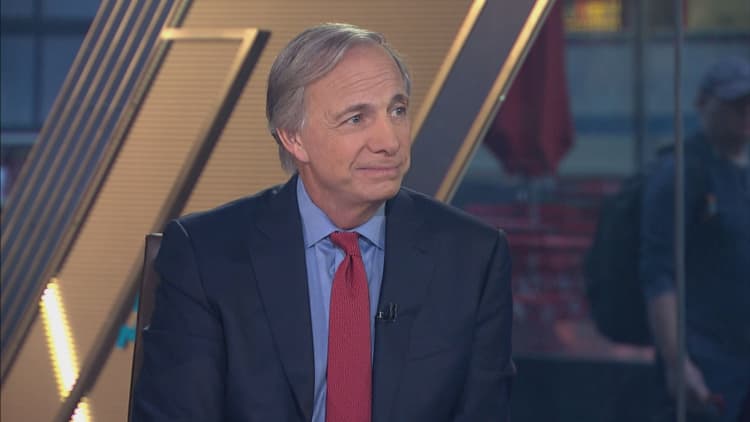For new investors, approaching the stock market can be confusing. Where should you start? When is a good time to buy? How can you minimize the risk of losing money?
Ray Dalio, the founder of the world's largest hedge fund, says the first thing to learn about investing isn't a complex trading strategy, but a simple lesson from history: Cycles repeat themselves.
"People have to understand that bubbles occur and are followed by busts," Dalio tells CNBC Make It.
In fact, ignoring historical cycles is the No. 1 miscalculation many investors make, he says.
"The biggest mistake that most people make is to judge what will be good by what has been good lately," Dalio explains. "So if a market has gone up a lot, they think that's a good market, rather than it's more expensive," he says.
And when the market goes down a lot, "they think, 'That's a bad market, and I don't want any of it,'" rather than realizing it may be a good time to buy certain stocks at a bargain price.
The cyclical nature of the market is backed by history: After the devastating downturn of the Great Depression, for example, the U.S. then saw extended bull markets — in which stock prices were on the rise — in the 1940s and 1950s. From the summer of 1949 to the summer of 1956, the S&P 500 saw a 267 percent return, according to data from LPL Financial.
A similar cycle occurred after the financial crisis in 2008. The U.S. markets eventually recovered from the recession and entered the longest running bull market in modern financial history, beating the bull market after World War II. In the 10 years following the collapse of Lehman Brothers, the S&P 500 increased by 130 percent.
Without realizing how these cycles repeat, many investors find themselves buying stocks at their most expensive on market confidence and selling stocks at their lowest prices out of fear the market will fall farther. But that doesn't work, according to Dalio. Instead, investors should develop an awareness for the cycles, and avoid following a herd mentality.
"[Investors] have to know what a bubble looks like, and know how bubbles lead to busts," Dalio says. His advice is to "do the opposite of most people, which is to sell in bubbles and buy in busts."
In his new book, "A Template for Understanding Big Debt Crises," available for free as a PDF, Dalio analyzes 48 of the globes debt crisis over the last 100 years to create a template for how bubbles are created and when they burst.
Dalio is worth an estimated $18 billion according to Forbes, and founded the hedge fund Bridgewater Associates in his two-bedroom apartment in New York in 1975. From its founding through 2017, Bridgewater returned the biggest cumulative net profit for a hedge fund ever, according to data from LCH Investments.
For Dalio, the first step to becoming a great investor is simple: "You have to understand the cycle and you have to go counter-cyclical."
Don't miss: Billionaire Ray Dalio remembers the moment he saw the financial crisis coming: 'This is the big one'
Like this story? Subscribe to CNBC Make It on YouTube!



